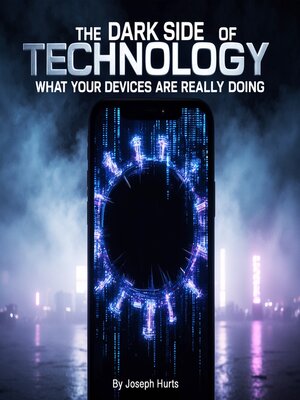The Dark Side of Technology
audiobook (Unabridged) ∣ What Your Devices Are Really Doing
By Joseph Hurts

Sign up to save your library
With an OverDrive account, you can save your favorite libraries for at-a-glance information about availability. Find out more about OverDrive accounts.
Find this title in Libby, the library reading app by OverDrive.



Search for a digital library with this title
Title found at these libraries:
| Library Name | Distance |
|---|---|
| Loading... |
This audiobook is narrated by a digital voice.
Modern smartphones are far more than communication devices—they are sophisticated surveillance apparatus that monitor, record, and transmit intimate details about their users' lives with unprecedented precision and scope. What most people carry in their pockets represents one of the most comprehensive tracking systems ever created, collecting data that would make Cold War-era surveillance operations seem primitive by comparison.
The smartphone's array of sensors creates multiple streams of highly personal information that flow continuously to corporate servers. The accelerometer and gyroscope don't just enable screen rotation—they can detect walking patterns, typing rhythms, and even whether you're intoxicated based on subtle changes in movement. The microphone, while appearing dormant, may activate to listen for audio fingerprints that inform advertising algorithms about your environment, conversations, and activities. Location services continue tracking movement even when GPS appears disabled, using cell tower triangulation, Wi-Fi network mapping, and Bluetooth beacon proximity to maintain constant awareness of your whereabouts.
The camera system in modern devices extends far beyond intentional photography. Facial recognition software can identify not just the device owner but also family members, friends, and strangers who appear in photos. These systems can determine emotional states from facial expressions, estimate age and demographic characteristics, and even detect health conditions through subtle visual cues. The front-facing camera can monitor eye movement and attention patterns, providing insights into what content holds user interest and for how long.







